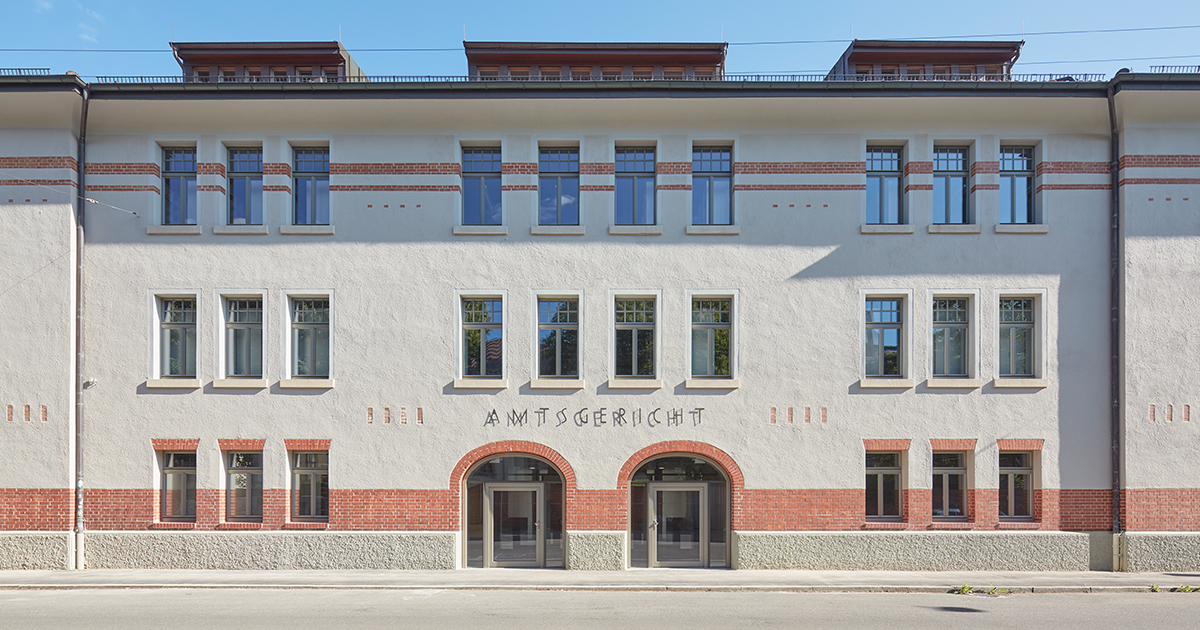Conversion and extension of residential and commercial building | Dannien Roller Architekten + Partner | World Design Awards 2023
Dannien Roller Architekten + Partner: Winner of World Design Awards 2023. Originally built in 1907 as the administrative building for the Thiepval Barracks, the structure located at Schellingstrasse 9-11 underwent a renovation between 2018 and 2021, resulting in a prime example of how to transform a historic building fabric with consideration and reverence in a contemporary manner. When converting the military building into a venue for independent judiciary, architects Dannien and Roller accomplished a skilful balancing act between military history with its claim to power, the site’s functional and symbolic requirements and the desire to preserve a monument while avoiding a prominent staging of the new elements.
During German notarial reform, a decision was made in 2017 to house the probate, protection and insolvency court in the state-owned building that houses the district court.
Despite the political aspirations of its builders, the three-storey administrative building, a simple reinforced concrete frame construction with brick bonding and brightly plastered exterior brick walls, boasts optimum design quality. A wide variety of uses over time, including as a laundry and a vehicle depot, resulted in damage to the building fabric, meaning renovation and reconstruction measures were required. For structural reasons, the foundations were replaced, the new floor slab was lowered, and the ground floor ceiling was removed. Extensive structural support measures were required. The premises’ use as a public administration building required an upgrade for the fire protection measures.
The district court offers unassisted accessibility from Schellingstrasse via two historic archways. The garage doors at the building rear have been opened up to provide light and transparency to courtrooms and meeting rooms. The glass panes are displaced in depth in homage to the wooden doors. The vibrant mirror effect of the incoming and emitted light gives the ground floor a dynamic appearance. The vestibule is recessed into the interior as a wood and glass structure, thus respecting the volume of the building. Featuring an unostentatious, yet dignified design, the spacious foyer expresses the district court’s self-conception as an institution, moving away from an oppressive atmosphere of condemnation and towards independent jurisprudence.
Influenced by the appearance and style of the vehicle depot’s dismantled slab and beam ceiling, the newly installed reinforced concrete ceiling is visible as a structure in the entrance and courtrooms. Rough-plastered walls in warm light grey and the bright polished screed flooring create a sense of spatial depth and provide a harmonious contrast to the light oak wood of the furniture in the room. New reinforced concrete columns in front of the courtrooms create dynamism. With concrete solidified on one of their side surfaces, the hexagonally asymmetric pillars insinuate the roughness of the former functional building. The subtle interplay with materials and surfaces establishes order, clarity and transparency and lends the premises a dignified presence.
The in-house work rooms for judges, employees and the registries are located on the two upper floors and the attic floor. The refurbishment of the upper floors preserves and activates the existing elements. New materials, design language and structure have been added, incorporating the given spatial quality. The working environment is characterised by clear forms and a minimalist aesthetic. The warm light grey on the walls matches the green grey on the wooden windows, which showcase the generous light intake in their exposed, rounded reveals. Centrally located as “space within a space”, the meeting islands deserve particular attention with their kitchenettes for employees.
Amtsgericht, the German word for district court, rests in Mahlau font above the entrance, indicating a new identity. Slender with a timeless elegance, the metal lettering creates a perfectly matched synthesis with the architecture as both an information carrier and façade ornament.

Project Details
Firm
Dannien Roller Architekten + Partner
Architect
Dannien Roller Architekten + Partner
Project Name
Conversion and extension of residential and commercial building
World Design Awards Category
Office Building Built
Project Location
Tuebingen
Team
Dipl. Ing. Maren Dannien, Dipl. Ing. Matthias Roller
Country
Germany
Photography ©Credit
©Dietmar Strauß, Besigheim
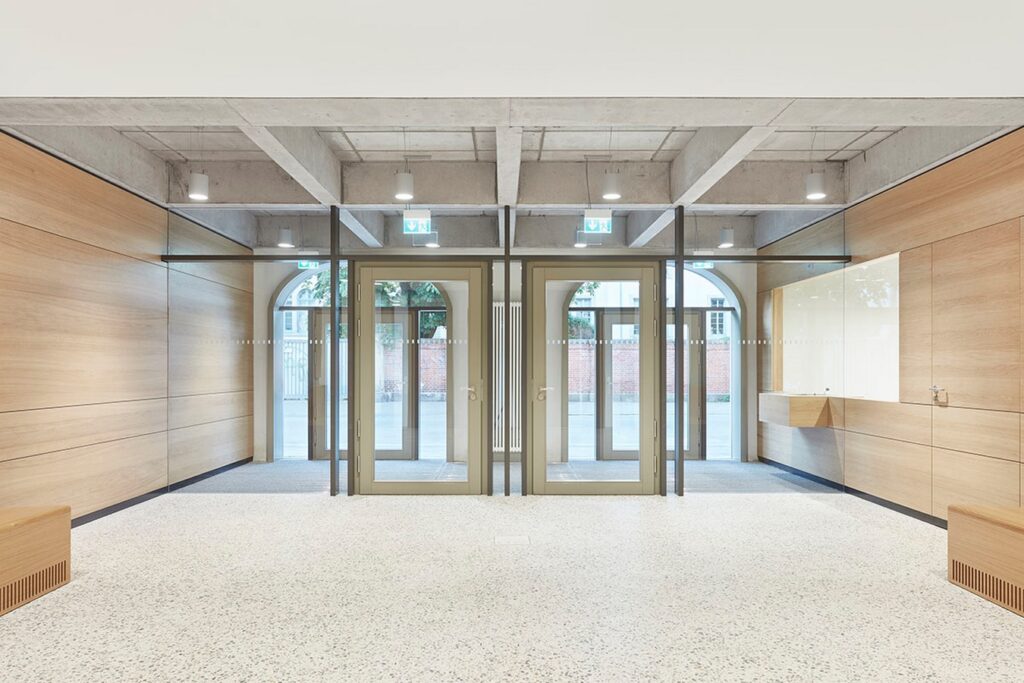
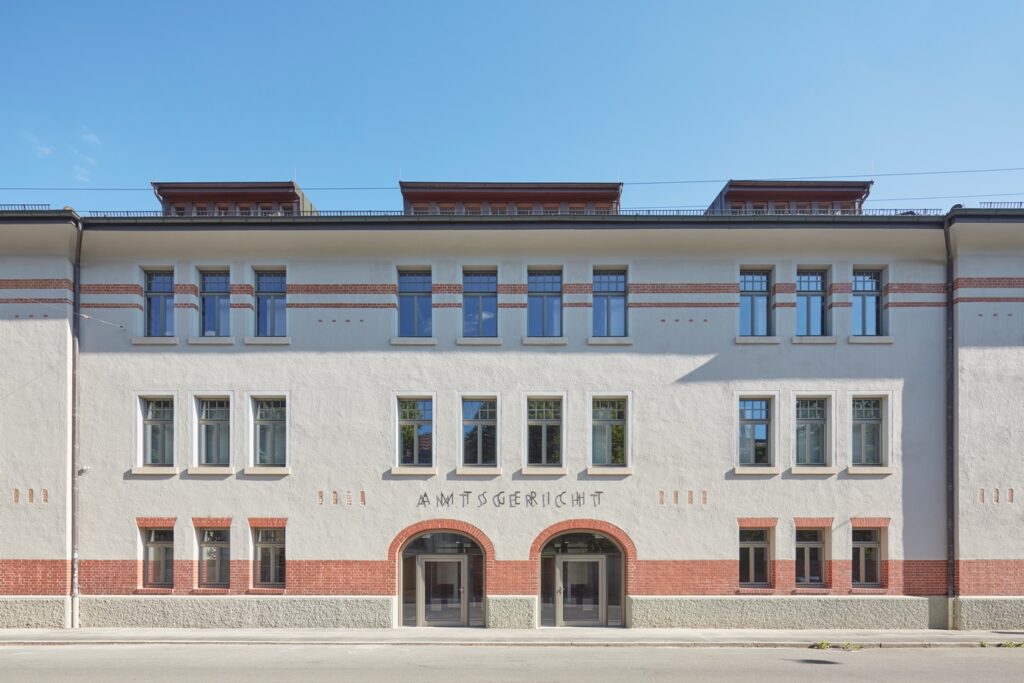
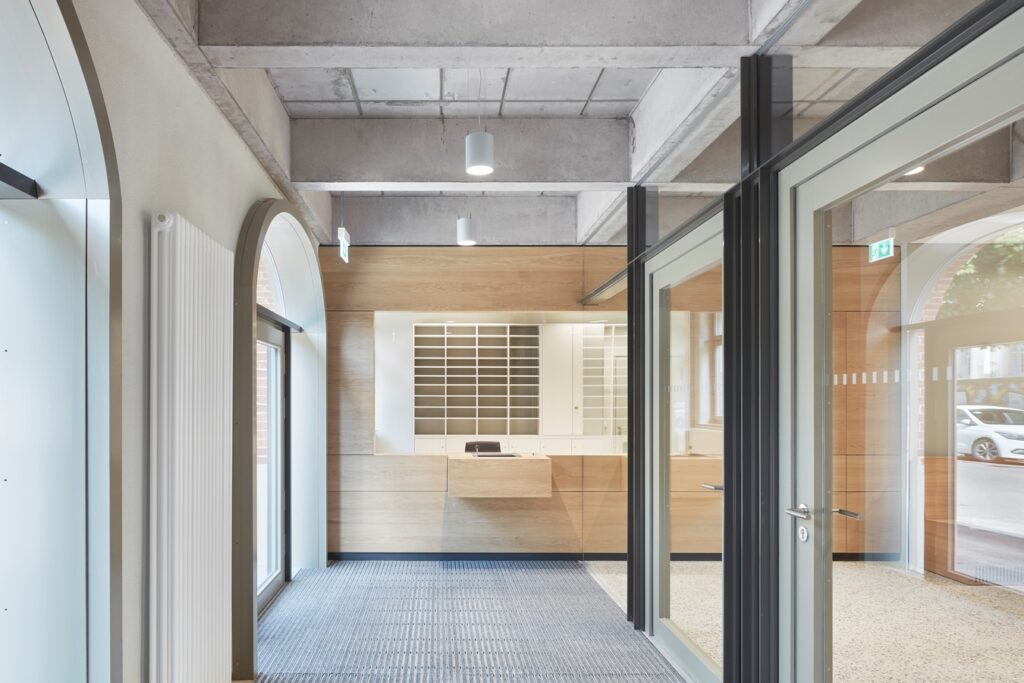
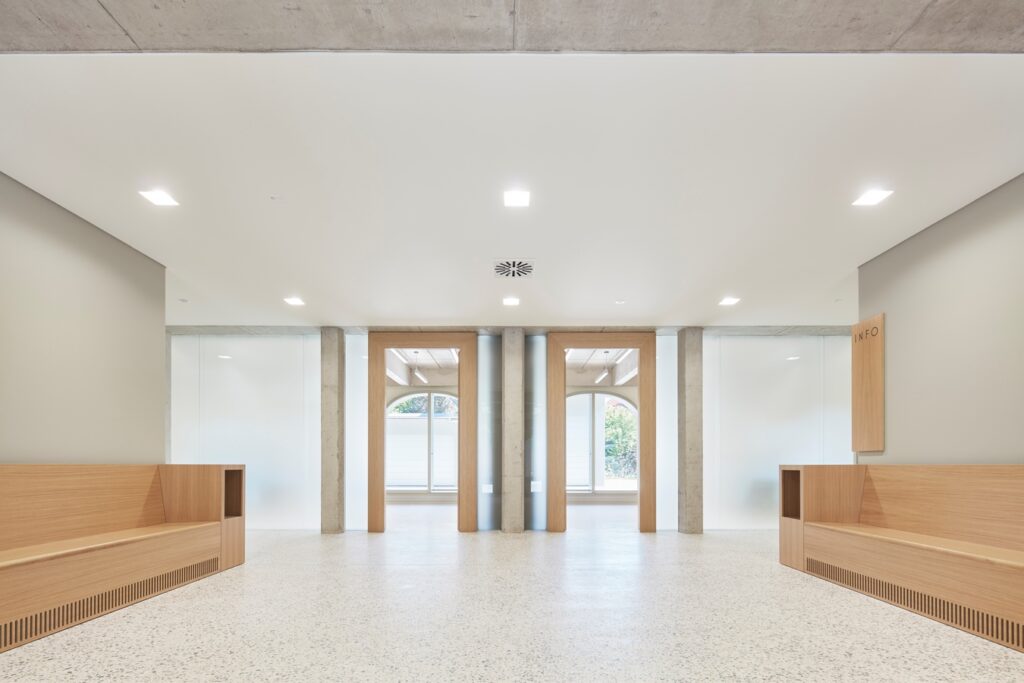
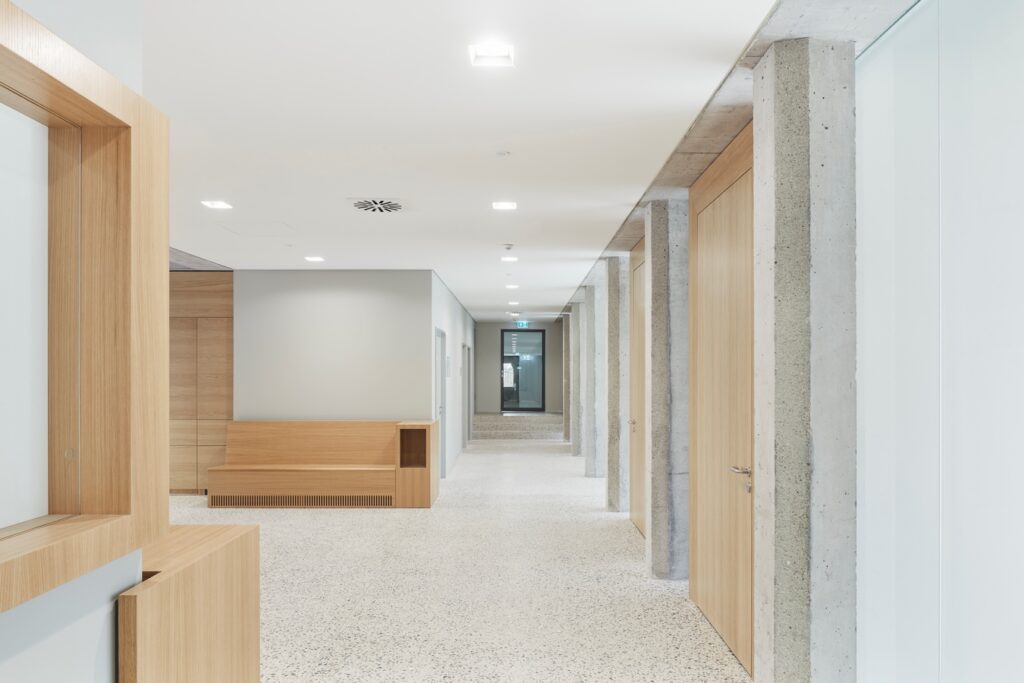
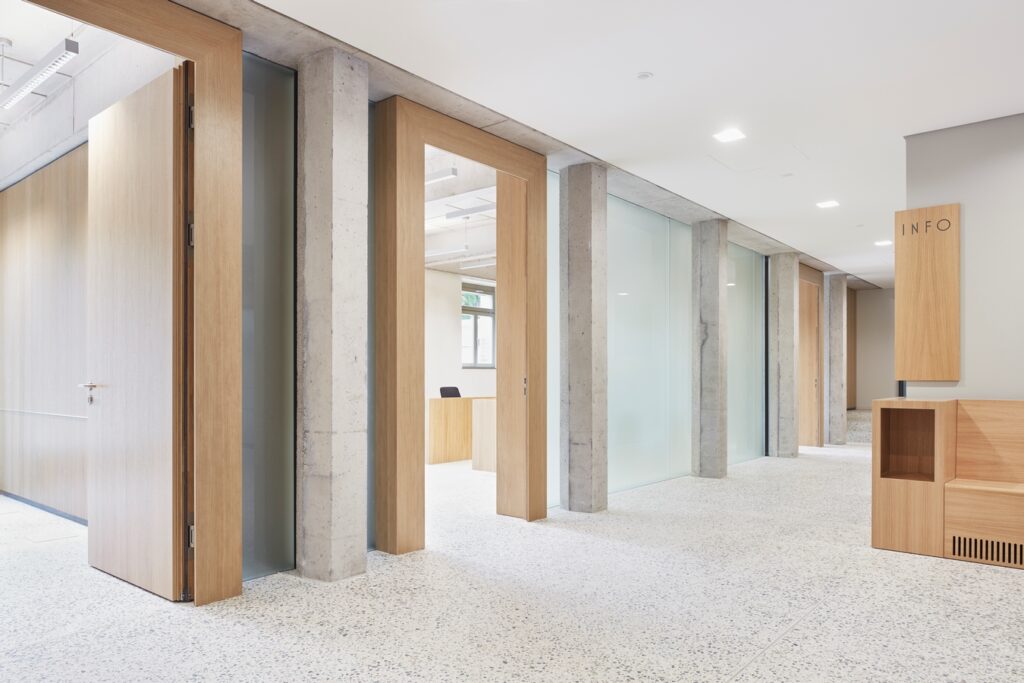
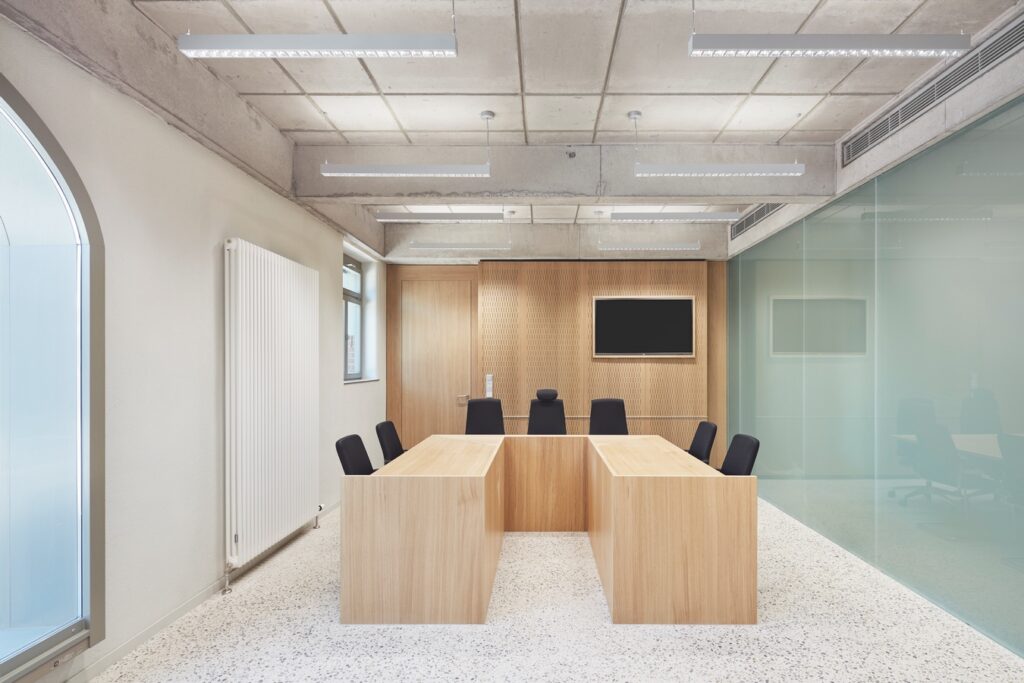
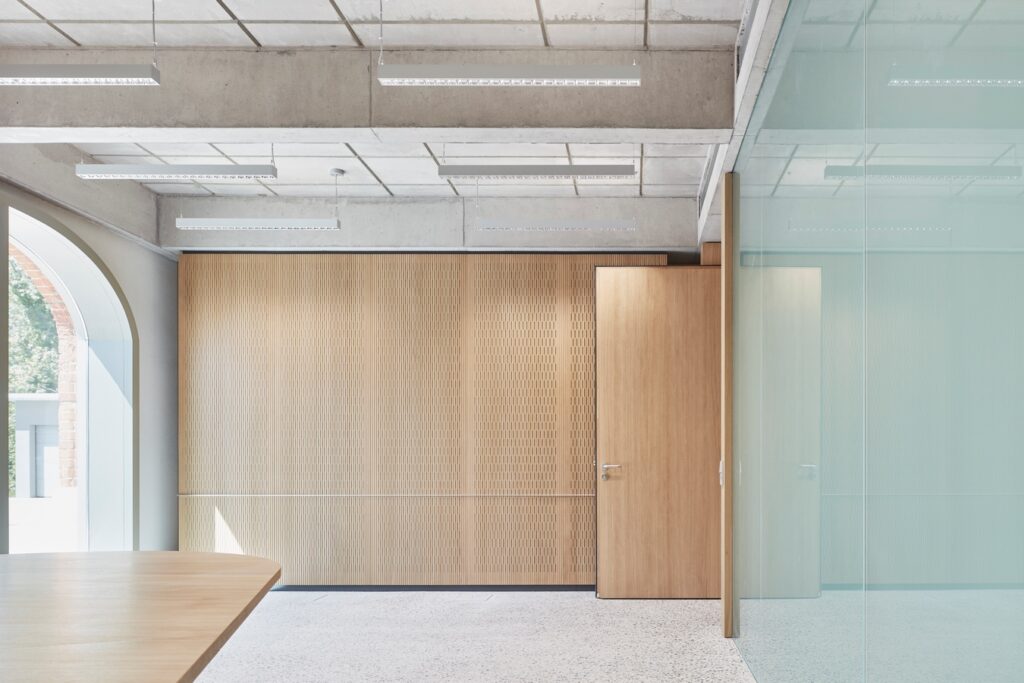
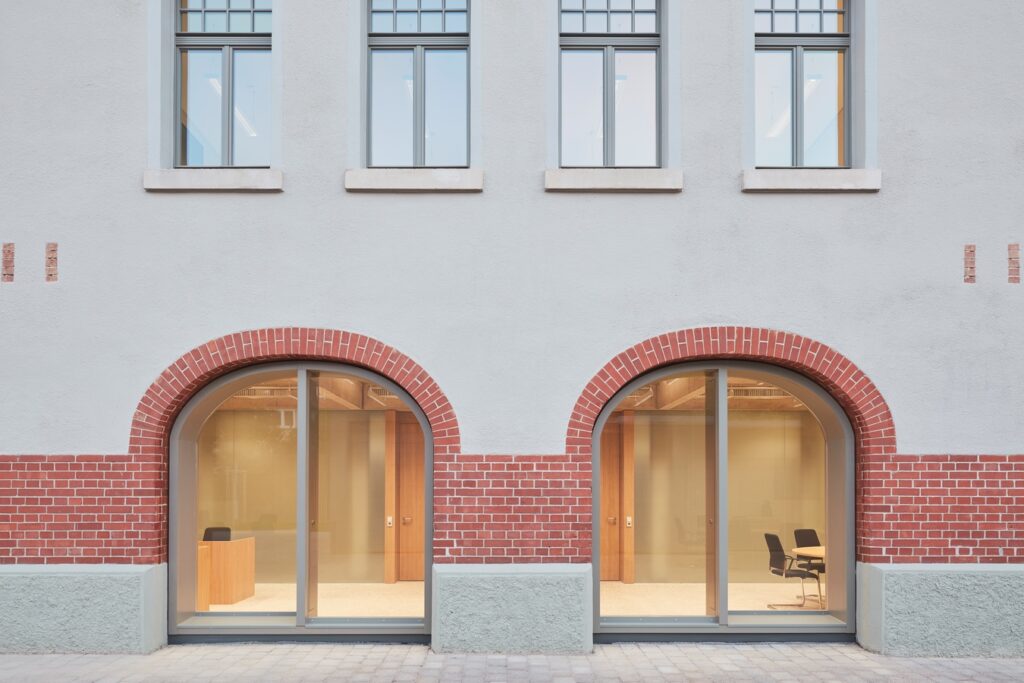
Dannien Roller Architekten + Partner: Architecture is not objective, but influenced by processes, requirements, budgets and cultural-spatial conditions. Our early cooperation with the client creates a qualitative coherence between the construction project, urban integration, space, form and material. This not only creates an unmistakable building culture, but also a high level of recognition.
Our focus is on the workplace: the place where we spend most of our lives awake. Although we live in a world that is becoming more and more mobile from day to day, administration and production, research and teaching, education and training, and work, are linked to physical places. This topos requires both material and emotional criteria, to which we respond creatively, innovatively and with outstanding design quality.



